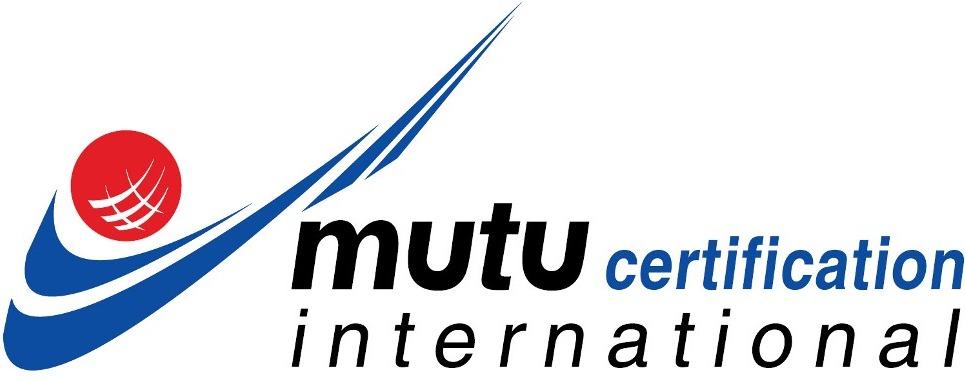DEVELOPING INSTREAM FLOW CRITERIA TO SUPPORT ECOLOGICALLY SUSTAINABLE WATER
3 APPENDIX 1 DEVELOPING A SAFER6 INFORMATION INFRASTRUCTURE ADVISORY COMMITTEE DEVELOPING
8 LDCISTANBUL2 9 MAY 2011 DEVELOPING NATIONS
DEVELOPING A METHODOLOGICAL FRAMEWORK FOR DEVELOPING LOCAL AND
DEVELOPING LAND WITHIN DERBYSHIRE A GUIDE TO SUBMITTING
TIPS FOR DEVELOPING ROUTINES AND DAILY SCHEDULES AT
USGS-TNC workshop advisors: Please review this draft template
Developing instream flow criteria to support ecologically sustainable water resource management in Pennsylvania, USA
Michele DePhilip, The Nature Conservancy
Julie Zimmerman, The Nature Conservancy
Person Completing this Form – Michele DePhilip
Today’s Date – 04/18/2008
Project Date and Duration – Approximately 18 months (Fall 2006 - Spring 2008)
Project Collaborators
Colin Apse, The Nature Conservancy Eastern US Freshwater Program, Brunswick, Maine
Michele DePhilip, The Nature Conservancy in Pennsylvania, Harrisburg, Pennsylvania
Julie Zimmerman, The Nature Conservancy, Bethesda, Maryland
Mark Smith, The Nature Conservancy Eastern US Freshwater Program, Boston, Massachusetts
Project Location – Pennsylvania (statewide), USA, with pilot study in Pennsylvania portion of Susquehanna River (approximately 60% of Pennsylvania is within Susquehanna River Basin)
Aim/Purpose – The Nature Conservancy, in close collaboration with representatives of state and federal agencies and river basin commissions, is leading a process to make recommendations on how instream flow protection could be improved within Pennsylvania. Recommendations will address approaches for establishing baseline, current, and future flow conditions and assessing flow alteration in Pennsylvania streams, developing quantitative relationships between flow alteration and ecological responses, defining instream flow criteria, and applying these criteria to decisions about water use. These recommendations are being developed at the request of Pennsylvania natural resource and water management agencies, primarily Pennsylvania Department of Environmental Protection.
Objectives:
Complete a review of tools and models from other states and countries that are useful for
Establishing Baseline Hydrologic Conditions
Establishing Current or Future Hydrologic Conditions
Selecting Hydrologic Statistics & Assessing Hydrologic Alteration
Defining Instream Flow Criteria & Developing Flow Ecology Relationships
Using of Instream Flow Criteria in Decision-Making
Complete a pilot hydrologic classification that is applicable statewide.
Complete a pilot study or studies to quantify relationships between flow alteration and ecological responses using existing data.
Illustrate strengths and weaknesses of various approaches and make recommendations on the most promising approaches given data availability and water management issues in Pennsylvania. Provide general cost estimates for most promising applications.
Establish an Instream Flow Advisory Committee to engage in this process, with the expectation that this committee would continue to engage on instream flow issues and act on some or all of the recommendations.
Specific Activities, Methods, and Data Used – A combination of literature review and personal communication with other practitioners was used to identify and review promising approaches for developing technical tools and incorporating best available science into water management decisions. Data used in the pilot studies are briefly described below.
Pilot analysis to develop flow alteration – ecological response curves – Statewide registered and estimated water withdrawal and discharge data and available surface water were provided by Pennsylvania Department of Environmental Protection and USGS. Macroinvertebrate monitoring data, and associated metrics were provided by Susquehanna River Basin Commission.
Pilot hydrological classification – Pilot stream classification completed using USGS Hydroecological Integrity Assessment Process (HIP) software. Reference gages selected with input from USGS. Regression models based on catchment characteristics were developed to assign hydrologic ‘types’ to ungaged sites. Data on catchment characteristics were provided by USGS.
Funding – $109K US dollar
Funding Source – Pennsylvania Growing Greener Environmental Stewardship and Watershed Protection Grant
Documents –Apse, C., DePhilip, M., Zimmerman, J. and Smith, M. P. (2008). Developing instream flow criteria to support ecologically sustainable water resource planning and management, Final report to the Pennsylvania Instream Flow Technical Advisory Committee, 196 p. http://www.depweb.state.pa.us/watershedmgmt/lib/watershedmgmt/water_allocation/pa_instream_flow_report-_tnc_growing_greener-_final.pdf
.
15 POTATO LATE BLIGHT IN DEVELOPING COUNTRIES G A
22 Full Citation ‘creative Pathways Developing Lifelong Learning for
2B INSTRUCTIONS FOR BREAKOUT SESSION ON DEVELOPING A MONITORING
Tags: criteria to, flow criteria, ecologically, sustainable, support, instream, water, developing, criteria
- KRAUTUVO VAIRUOTOJO KLAUSIMYNAS 1 KADA DARBUOTOJAMS IŠDUODAMOS ASMENINĖS APSAUGINĖS
- TRABAJO BAJO PRESIÓN1 EN EL MUNDO DE HOY PARTICULARMENTE
- KUISIONER UNTUK PENERIMA BLOCKGRANT DATA UMUM NAMA PTNPTS ALAMAT
- WWWCHEMPURPL 110 FENANTROLINA 110PHENANTHROLINE C12H8N2 •
- CHARLA COLOQUIO EL BITCOIN COMO MEDIO DE PAGO CONSECUENCIAS
- F UNCTIEBESCHRIJVING (TAKEN PROFIEL) PROJECTLEIDER OMGEVING 1IDENTIFICATIEGEGEVENS FUNCTIE
- דר נהרי גלית 7345401 ERROR REFERENCE SOURCE NOT
- BASADOS EN CHARLAS CON LOS ESTUDIANTES DE LA LICENCIATURA
- ZINTEGROWANY PROGRAM ASP W ŁODZI KBZ2618S2020 UMOWA NR …………………………
- VORGABEN INTERNE FESTE DIE EINRICHTUNGEN DER HOCHSCHULE DIENEN DEN
- DISEÑO DE PRODUCTO ORIENTADO AL USUARIO MEDIANTE
- LOGO UNIVERSITÉ PARTENAIRE CONVENIO DE COTUTELA ORDEN DEL 6
- CÔNJUGE VARÃO REQUER A INTERDIÇÃO DA ESPOSA E A
- INFORMACIÓN SOBRE EVALUACIÓN Y CALIFICACIÓN MÓDULO PROFESIONAL DIRECCIÓN DE
- PARA PUBLICACIÓN 16 DE NOVIEMBRE DE 2010 1201 A
- 4 RDAGJ2712005 CONTRALORÍA GENERAL DE LA REPÚBLICA DIVISIÓN DE
- LEY Nº 1272 LEY DE EJERCICIO PROFESIONAL DE KINESIOLOGÍA
- MINISTERIO DE EDUCACIÓN Y FORMACIÓN PROFESIONAL DIRECCIÓN PROVINCIAL DE
- NAME DATE PROFESSOR ENGLISH COMPOSITION II DAVIS LIBRARY RESOURCES
- ANNEX A FOLLOWUP ACTIONS ON MATTERS TO BE TAKEN
- I ICS FORMS BOOKLET NCIDENT BRIEFING (ICS 201) 1
- IAI WILAYAH JAWA BARAT PELATIHAN PAJAK BREVET A
- JOURNAL FORMAT EXAMPLE OCTOBER 11 STAYED IN CLASS
- ZAŠČITA DOBROVERNIH PRIJAVITELJEV – PRISTOJNOSTI KOMISIJE ZAKON O
- DESIGN A STAMP COMPETITION STAYING WELL IN 2020
- NA PODLAGI ZAKONA O ODNOSIH REPUBLIKE SLOVENIJE S SLOVENCI
- “TIMBRE DA EMPRESA” TERMO DE COMPROMISSO DE ESTÁGIO PREVISTO
- 5819 EXPERT ENTRY THERE ARE SOME COMPONENTS IN
- PRIMIJENJENA FOTOGRAFIJA I 201617 1 ZA SVE MODULE A)
- GUITAR FRETBOARD TUTORIAL TONY HOGAN A COUSTIC GUITAR PLAYER
 BIZNESA PLĀNA NOSAUKUMS SATURS 1 KOPSAVILKUMS 4 2
BIZNESA PLĀNA NOSAUKUMS SATURS 1 KOPSAVILKUMS 4 2MODELE DE REGLEMENT INTERIEUR COMITÉ TECHNIQUE PARITAIRE ARTICLE 1ER
[SZÖVETKEZET NEVE] ALAPSZABÁLYA (MINTA) JELEN ALAPSZABÁLYBAN A SZÖVETKEZET ALAPÍTÓ
REMEMBER THAT CONSTITUTIONS WILL BE DUE ON A TIER
 PT MUTUAGUNG LESTARI FORM APLIKASI ORGANIK (FARM) BAGIAN 1
PT MUTUAGUNG LESTARI FORM APLIKASI ORGANIK (FARM) BAGIAN 1VEDLEGG 7 TEKNISKE REGULERINGSTILTAK OG FELLES OMREGNINGSFAKTORER FOR FISKEPRODUKTER
 JUAN KARLOS IZAGIRRE DONOSTIAKO ALKATEA IJENTEA 1 TEL
JUAN KARLOS IZAGIRRE DONOSTIAKO ALKATEA IJENTEA 1 TEL EJERCICIO 13 DE WORD ESTILOS UN ESTILO EN
EJERCICIO 13 DE WORD ESTILOS UN ESTILO EN43503 REV1 CHAPTER 6 LEASE REQUIREMENTS AND LEASING ACTIVITIES
 XIV SUBIDA VILLA DE MOYA 12 Y 13 DE
XIV SUBIDA VILLA DE MOYA 12 Y 13 DE SAISTĪTS UZŅĒMUMS TAJĀ SKAITĀ VIENS VIENOTS SASKAŅĀ AR NOTEIKUMU
SAISTĪTS UZŅĒMUMS TAJĀ SKAITĀ VIENS VIENOTS SASKAŅĀ AR NOTEIKUMUIZZIŅA PAR NEKUSTAMĀ ĪPAŠUMA OBJEKTA APGRŪTINĀJUMIEM PAKALPOJUMA TURĒTĀJS RĒZEKNES
JAVNA USTANOVA NARODNA BIBLIOTEKA „NJEGOŠ“ NIKŠIĆ S T A
 4 E UCARISTÍA DE LA FIESTA DE MARÍA AUXILIADORA
4 E UCARISTÍA DE LA FIESTA DE MARÍA AUXILIADORATROŠKŪNŲ SENIŪNIJOJE 1 TROŠKŪNŲ MIESTO NEPRIKLAUSOMYBĖS G IR
 TÍTULO DE LA COMUNICACIÓN X CONGRESO APEGA 2010 (COMUNICACIÓN
TÍTULO DE LA COMUNICACIÓN X CONGRESO APEGA 2010 (COMUNICACIÓN DYREKTOR SZKOŁY PODSTAWOWEJ …… OŚWIADCZENIE O REZYGNACJI Z UDZIAŁU
DYREKTOR SZKOŁY PODSTAWOWEJ …… OŚWIADCZENIE O REZYGNACJI Z UDZIAŁU HEADLINE SUMMARY AND AGREED ACTION POINTS OF OLD
HEADLINE SUMMARY AND AGREED ACTION POINTS OF OLDNUMBER AS91025 VERSION 2 PAGE 2 OF 2 ACHIEVEMENT
 PATRONATO DE TURISMO LISTAS DEFINITIVAS BOLSA DE TURISMO 20102011
PATRONATO DE TURISMO LISTAS DEFINITIVAS BOLSA DE TURISMO 20102011